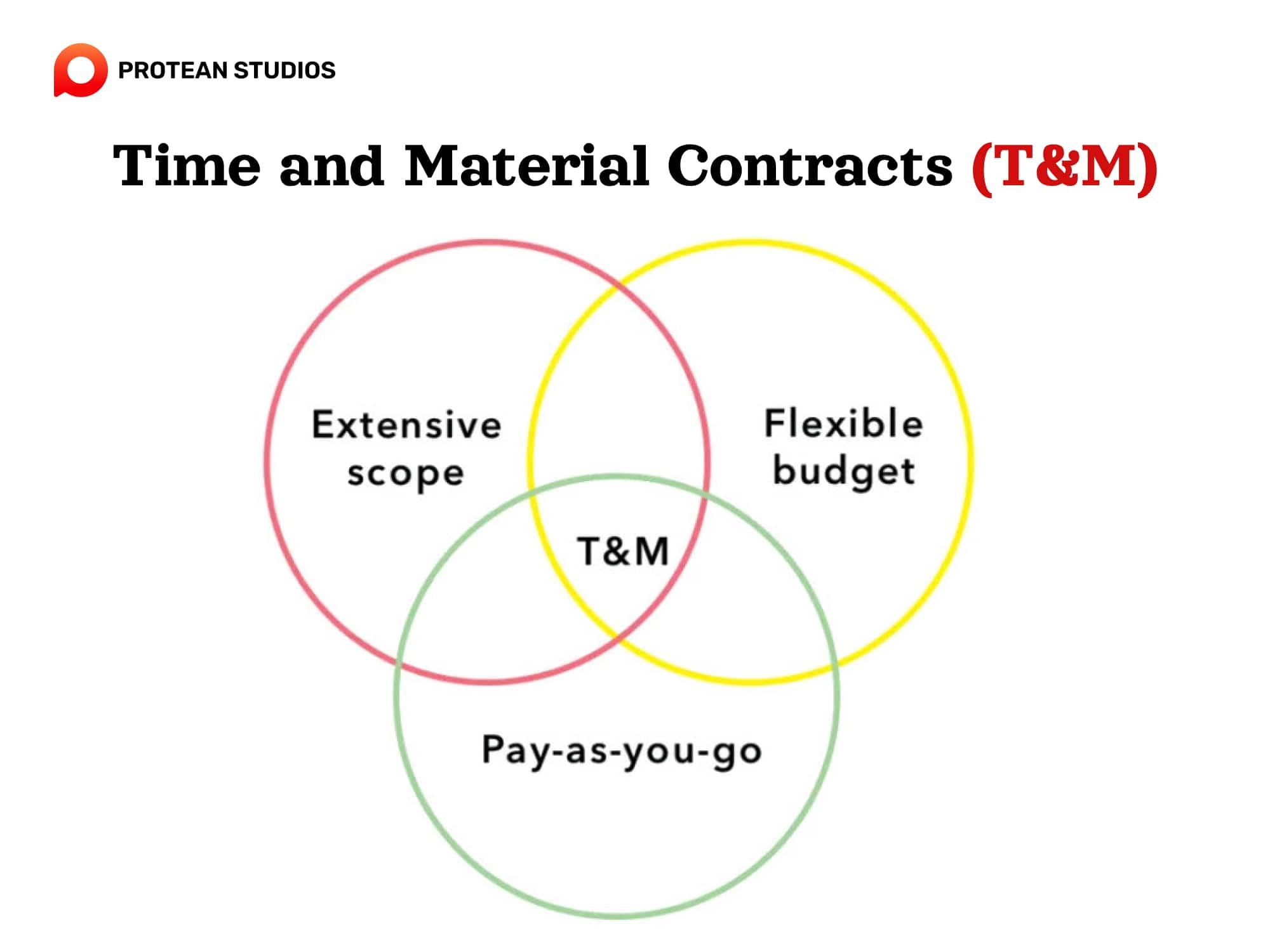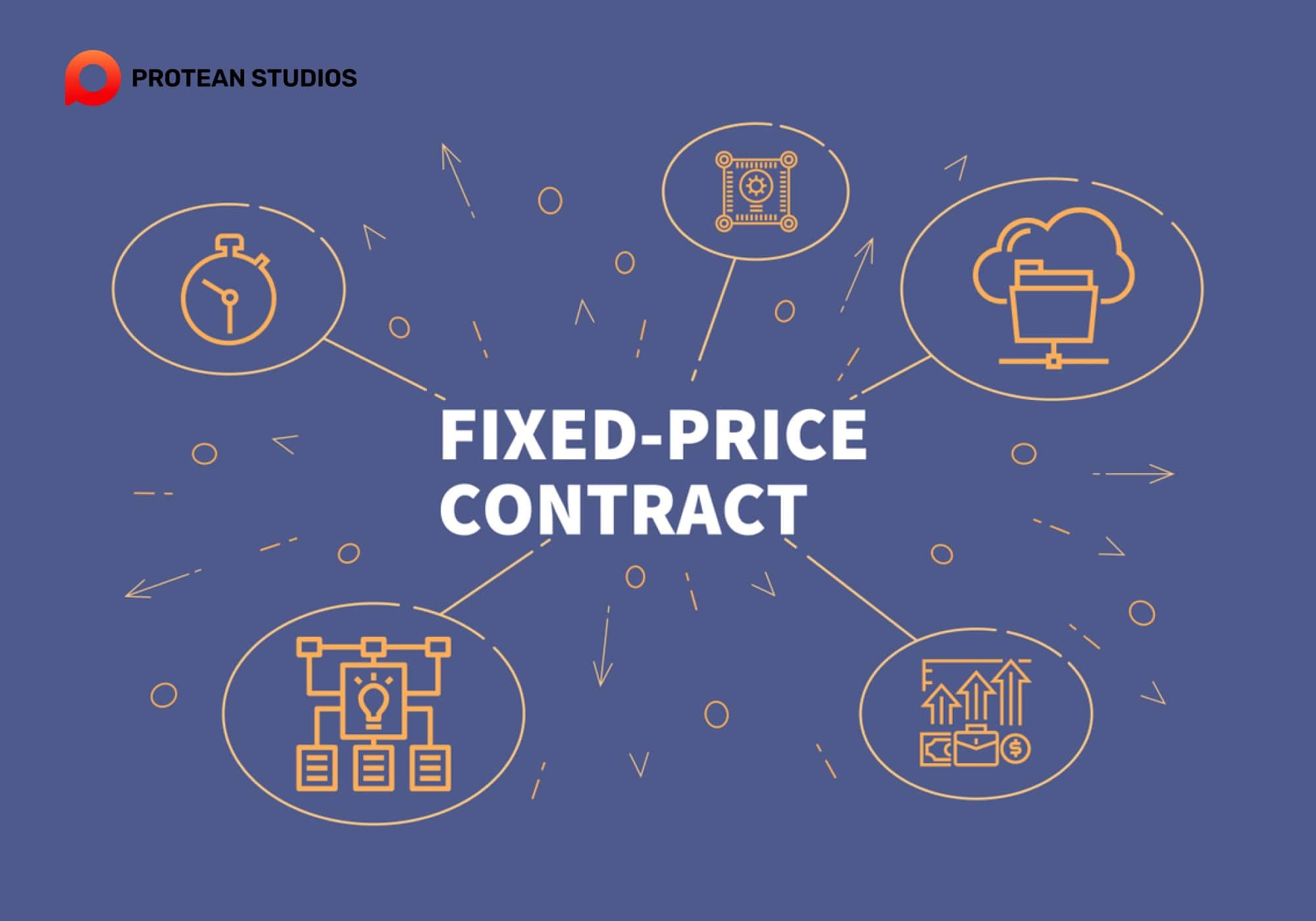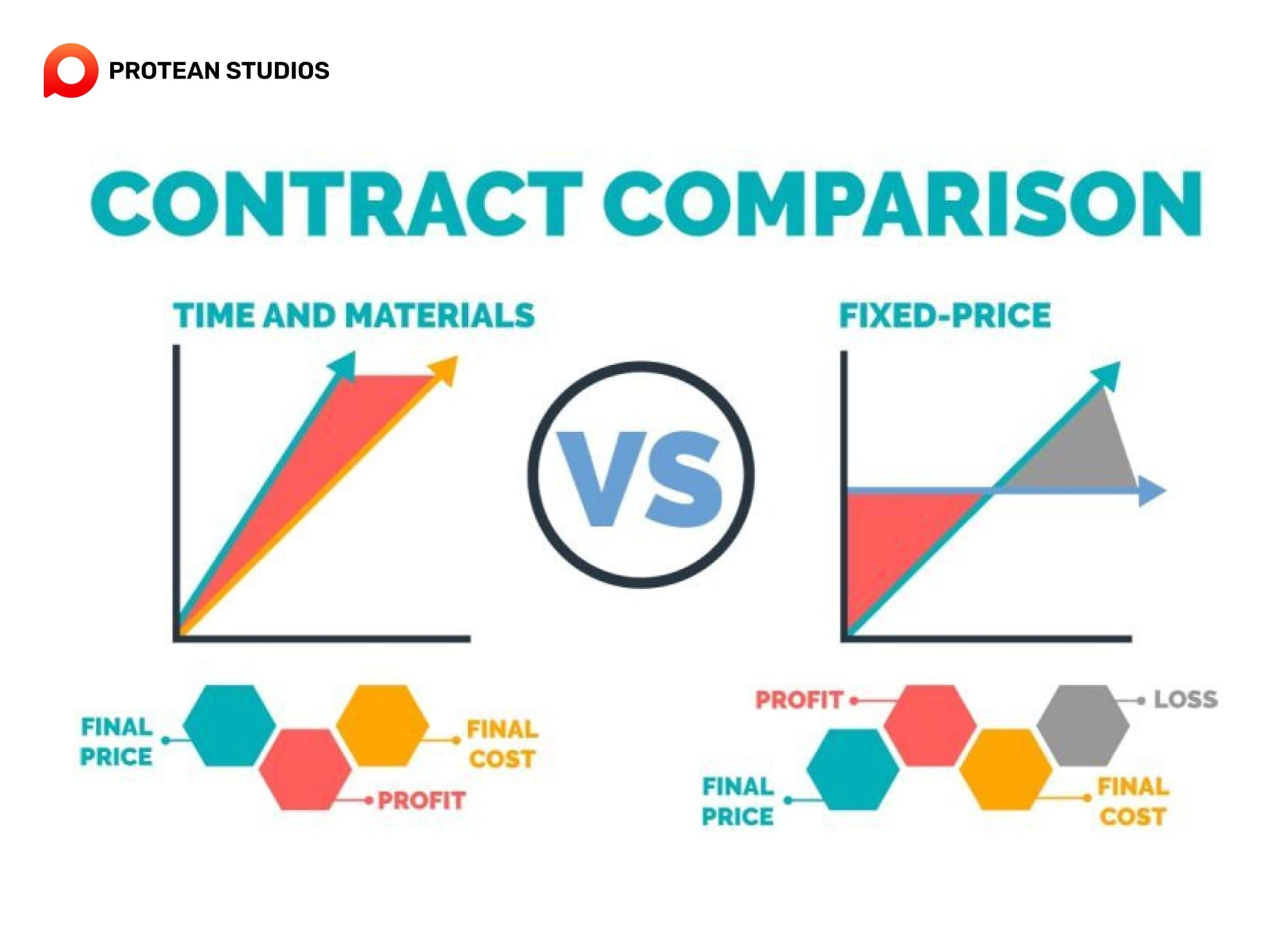When embarking on a new project, it is very important to make a crucial decision: Time & Material (T&M) vs. Fixed Price Contract. Both offer distinct advantages and drawbacks, impacting your budget, flexibility, and risk. Thus, this article dives deep into T&M vs. fixed-price contracts, helping you determine which approach reigns supreme for your specific project.
About Time and Material Contracts (T&M) and Fixed Price Contracts
Choosing the right contract type is essential for a successful project. Here's a breakdown of the two most common options: Time & Material (T&M) and Fixed Price Contracts:
1. T&M Contract
A time-and-material (T&M) contract is a type of agreement in which the client pays the vendor based on the actual time spent and the materials used to complete the project. This model offers flexibility as the scope can evolve over time, but it can also lead to uncertainty in costs and timelines.

Key features:
Cost: variable, based on hourly rates and material costs.
Scope: flexible and adaptable, allowing for changes as needed.
Risk: The client bears the risk of cost overruns if the project scope expands.
Benefits: Ideal for projects with an undefined scope or frequent changes, it allows for close collaboration and transparent cost tracking.
Drawbacks: unpredictable final cost; requires good communication and project management to avoid scope creep.
Learn more: Key Trends For CDP Development In 2024
2. Fixed-price contract
A fixed-price contract sets a previous price for the entire project, regardless of the actual time and resources expended. This model provides predictability about costs and timelines but may lack flexibility if there are changes or unforeseen circumstances during the project.
Key features:
Cost: fixed and agreed upon before the project starts, providing budget certainty.
Scope: Defined and well-documented, with limited changes allowed.
Risk: The contractor absorbs the cost of any project delays or unexpected challenges.
Benefits: Offers clear cost predictability, ideal for well-defined projects with minimal unknowns.
Drawbacks: Limited flexibility for changes requires detailed upfront planning to avoid cost overruns if unforeseen issues arise.

Other article: Forecasting The DMP Software Market: Future Outlook
Pros and Cons of Time and Material Contracts (T&M) and Fixed Price Contracts
Choosing the right contract type for your project impacts its success. Here's a comprehensive analysis of the pros and cons of time-and-material (T&M) and fixed-price contracts:
1. Advantages
Time and Material Contract (T&M) | Fixed-price contract |
1. Flexibility: The biggest advantage of a T&M contract is its adaptability to changing project requirements. As the project progresses, new ideas or unforeseen circumstances may need adjustments. A T&M contract allows for these changes without renegotiating the entire contract or incurring significant penalties. | Predictable cost: The primary advantage of a fixed-price contract is budget certainty. The agreed-upon price upfront eliminates the risk of cost overruns for the client. |
2. Transparency: T&M contracts promote transparency as the client receives detailed breakdowns of time spent by the contractor and materials used. This allows for close cost tracking and the identification of potential areas for optimization. | Reduced client risk: A fixed-price contract minimizes the client's financial risk as the contractor absorbs the cost of any project delays, unexpected challenges, or scope changes. |
3. Collaboration: The ongoing nature of cost tracking in T&M contracts encourages close communication between the client and contractor. This fosters a collaborative environment where both parties are invested in project success. | Clear project goals: Negotiating a fixed-price contract encourages a well-defined project scope with clear goals and deliverables. This focus on clarity helps keep the project on track and minimizes ambiguity. |
4. Reduced upfront planning: Compared to fixed-price contracts, T&M contracts need less detailed upfront planning. This can be beneficial for projects with some level of inherent uncertainty, allowing for a quicker project start. | Faster project start: Fixed-price contracts need less negotiation time compared to T&M contracts, leading to a faster project start. |

2. Disadvantages
Time and Material Contract (T&M) | Fixed-price contract |
1. Unpredictable final cost: A major drawback of T&M contracts is the potential for unpredictable final costs. Since costs depend on actual hours worked and materials used, project scope changes or unforeseen challenges can cause the final price to fluctuate. | Limited flexibility: Fixed-price contracts offer limited flexibility to accommodate significant changes in project scope. Any major adjustments might need negotiating the contract, leading to delays and extra costs. |
2. Requires strong project management: Effective project management is crucial for the success of T&M contracts. Clear communication, scope control, and managing client expectations are essential to prevent scope creep and ensure the project stays within budget. | Pressure on the contractor: The contractor bears the risk of any unforeseen challenges or underestimations during the project. This can put pressure on the contractor to find ways to absorb these costs, impacting project quality. |
3. Potential for disputes: Disagreements about billable hours or materials used can arise in T&M contracts. Having a well-defined scope document and clear communication protocols can help mitigate this risk. | Requires detailed upfront planning: To mitigate the risk of cost overruns later in the project, fixed price contracts demand detailed upfront planning and a comprehensive understanding of project requirements. |
4. Less incentive for efficiency: Since the contractor earns payment based on time spent, there may be less incentive to focus on efficiency. Clear communication of expectations and incorporating performance-based incentives can address this issue. | Potential for lengthy negotiations: Reaching an agreement on a fixed price can be a time-consuming process, for complex projects with many unknowns. |
Read more: Crucial Insights: The Role Of MVP In Software Development
Time & Material Contract (T&M) and Fixed Price Contract: What is better?
Choosing between a time-and-material (T&M) contract and a fixed-price contract depends on the specific circumstances of the project at hand. In essence, projects requiring flexibility and where the client can manage and control the work benefit from a T&M contract. Projects with a clear scope and a need for budget certainty often prefer a fixed-price contract.
Finally, making the decision involves assessing project requirements, risk tolerance, and the level of oversight the client is prepared to exercise.




